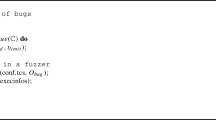Abstract
As web applications are a type of software for providing web services, its development and operation essentially depend on a software development life cycle (SDLC). However, because it is difficult to ensure the safety in web applications by outsourcing that evade the management based on SDLC, there is a high possibility of using it as a path of cyber attacks. Thus, in this study a web application acquisition procedure for outsourcing that can provide safe web services by strengthening security and makes possible to efficiently manage software by outsourcing from the plan for web applications by outsourcing to its disposal is proposed. The proposed method extends a procedure on security viewpoint that web applications by outsourcing and simply tests whether or not there exists a possibility of hacking in a security perspective. Also, it shows an advantage of providing more safe web services through preparing new threats in web applications without exposing internal service system structures.






Similar content being viewed by others
References
Zhang, J., & Chung, J. Y. (2006). An open framework supporting multimedia web services. Multimedia Tools and Applications, 30(2), 149–164.
Katsionis, G., & Virvou, M. (2008). Personalised e-learning throught an educational virtual reality game using Web services. Multimedia Tools and Applications, 39(1), 47–71.
Kumar, R. (2011). Fifth generation networking principles for a service driven future internet architecture. Wireless Personal Communications, 57, 393–411.
Ford, R. (2004). Googling for gold: Web crawlers, hacking and defense explained. Network Security, 2004(1), 10–13.
Forte, D. (2010). Preventing and investigating hacking by auditing web applications. Network Security, 2010(2), 18–20.
Amlani, R. D. (2013). Comparision of different SDLC models. International Journal of Computer Applications and Information Technology, 2(1), 4–8.
Lai, W. H., & Tsen, H. C. (2013). Exploring the relationship between system development life cycle and knowledge accumulation in Taiwan’s IT industry. Expert Systems, 30(2), 173–182.
Pollard, C. E., Gupta, D., & Satzinger, J. W. (2010). Teaching systems development: A compelling case for integrating the SDLC with the ITSM lifecycle. Information Systems Management, 27(2), 113–122.
http://en.wikipedia.org/wiki/Software_Development_Life_Cycle.
Danahy, J. (2008). The ‘phasing-in’ of security governance in the SDLC. Network Security, 2008(12), 15–17.
Rana, K. K., & Ahmad, S. S. U. (2005). Bringing maturity to test. Electronics Systems and Software, 3(2), 32–35.
Le, M., Stavrou, A., & Kang, B. B. H. (2012). DoubleGuard: Detecting intrusions in multitier web applications. IEEE Transactions on Dependable and Secure Computing, 9(4), 512–525.
Zhang, J. (2011). A mobile agent-based tool supporting web services testing. Wireless Personal Communications, 56, 147–172.
Kim, M. S., Lee, D. H., & Kim, J. K. N. (2013). A study on convergence security system for preventing leakage of internal information. Wireless Personal Communications, 73, 175–185.
Choi, K. H., & Lee, D. H. (2015). A study on strengthening security awareness programs based on an RFID access control system for inside information leakage prevention. Multimedia Tools and Applications, 74(20), 8927–8937.
Author information
Authors and Affiliations
Corresponding author
Rights and permissions
About this article
Cite this article
Choi, KH., Kim, K.J. A Study on Acceptance Procedure Improvement of Web Application by Outsourcing for Mobile Service. Wireless Pers Commun 94, 5–16 (2017). https://doi.org/10.1007/s11277-015-3153-0
Published:
Issue Date:
DOI: https://doi.org/10.1007/s11277-015-3153-0




